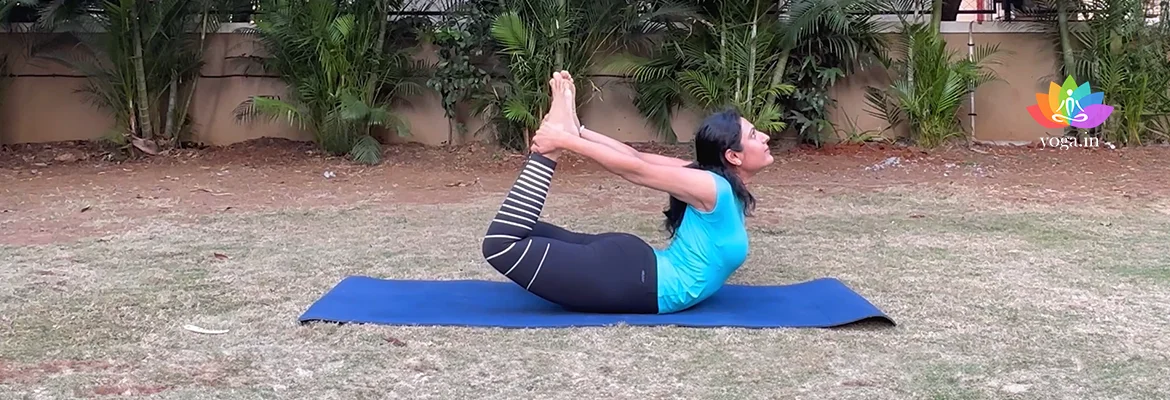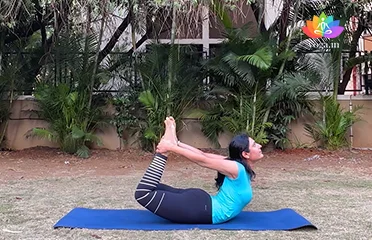Lie down on your stomach with your feet apart, in line with your hips.
Introduction to the Asana
The Sanskrit name is derived from Dhanur (धनुर) means bow and Asana (आसन) meaning posture or seat.
Step to get in the pose
-
-
Exhale and bend the knees towards the head.
-
Stretch the arms back and hold your both feet with both hands making a back bend and positioning like a bow.
-
Keep your knees hip-width apart.
-
Exhale completely and pull your both feet slowly – raising the knees above the floor and simultaneously lifting the chest off the floor.
-
Do not rest the ribs or pelvic bones on the floor. Only the abdomen will bear the weight of the body on the floor.
-
Lift the head and pull it as back as possible. Look straight ahead with a smile on your face.
-
After the full stretch upwards has been achieved, join together the thighs, knees and ankles.
-
Keep the pose stable while paying attention to your breath.
-
After 20 seconds to a minute you exhale, gently bring your legs and chest to the ground and relax.
-
Release the pose.
Common mistakes and pitfalls
-
If your knees are too close together, that may lead to discomfort in the back.
Benefits
-
Aids better functioning of kidneys, liver, pancreas, and intestines.
-
Helps in controlling diabetes.
-
Improves the reproductive system.
-
Helps relieve menstrual disorders.
-
Activates the pituitary, pineal & thyroid glands.
Contraindication
-
Avoid in case of high or low blood pressure.
-
Avoid if suffering from headaches or migraine.
-
Avoid in case of lower back pain or injury.
-
Avoid if suffering from heart-related diseases.




